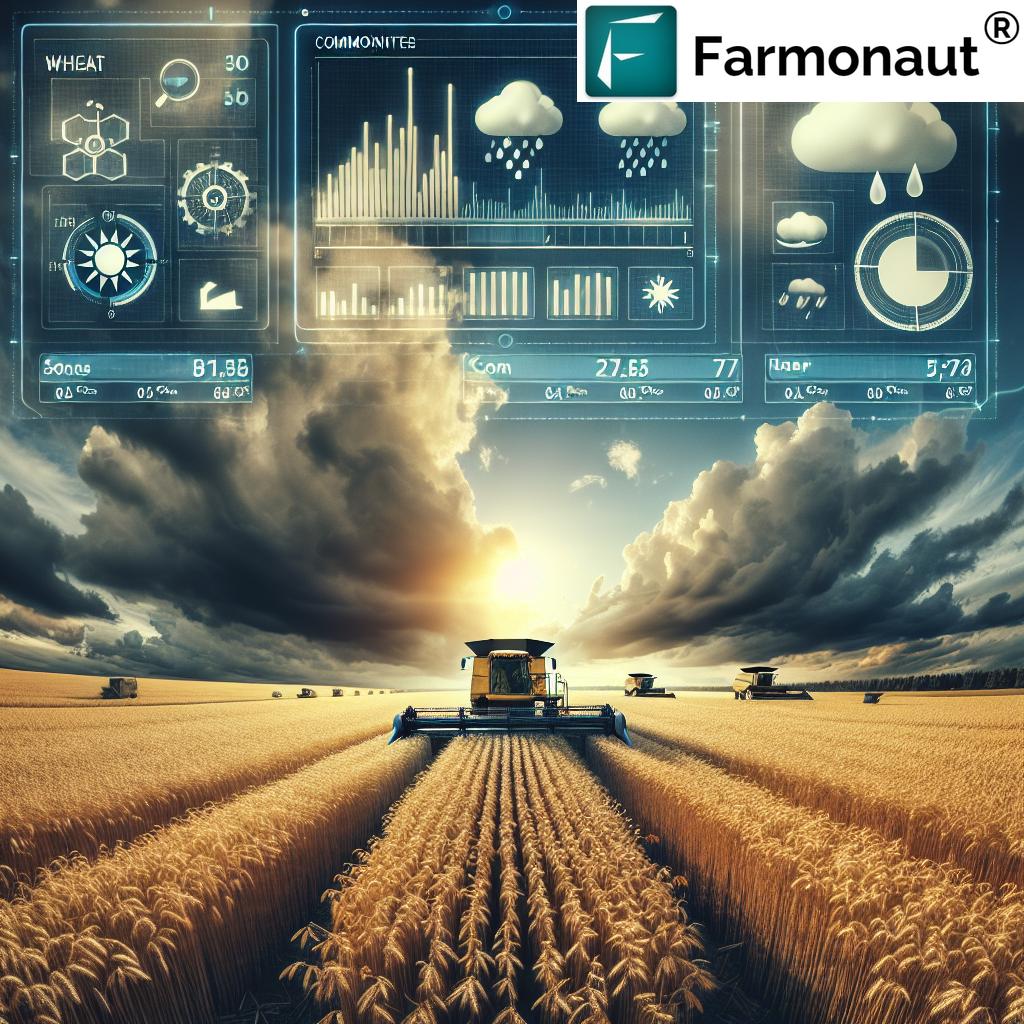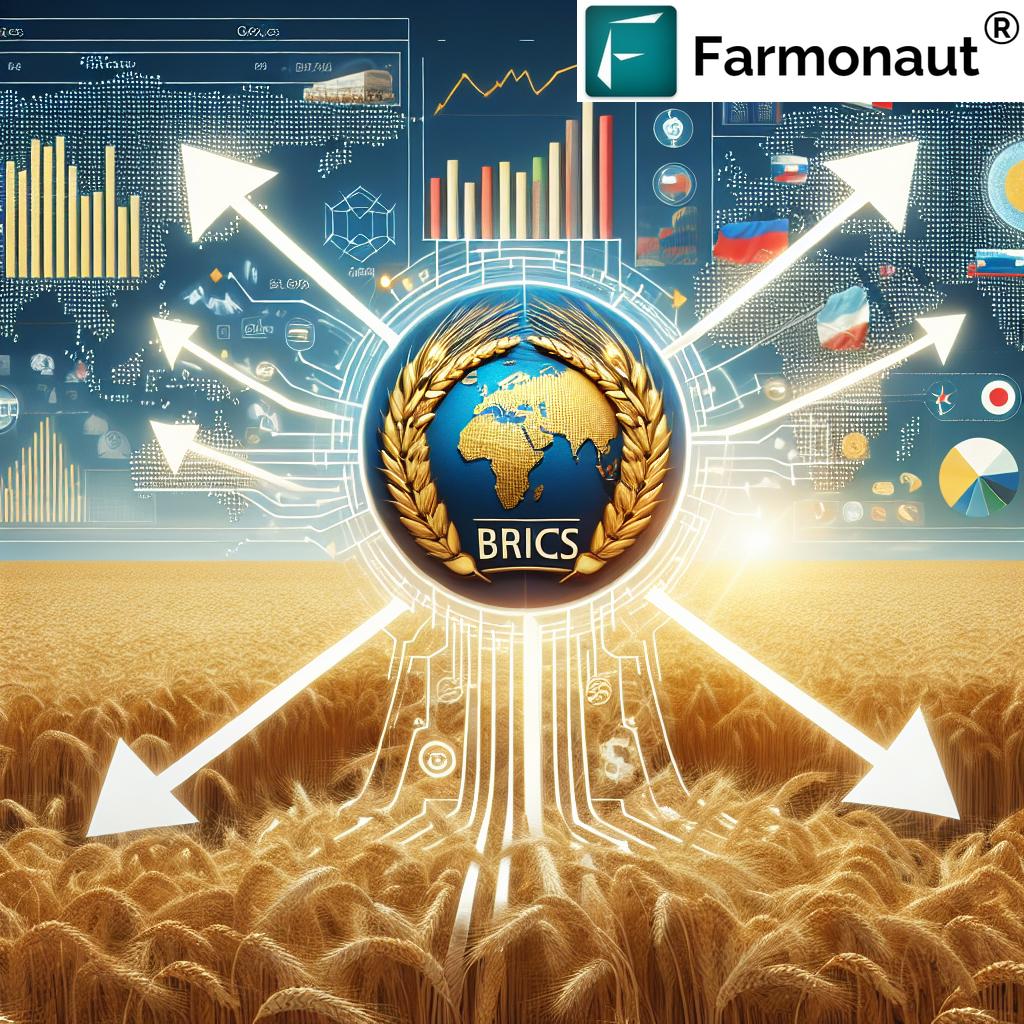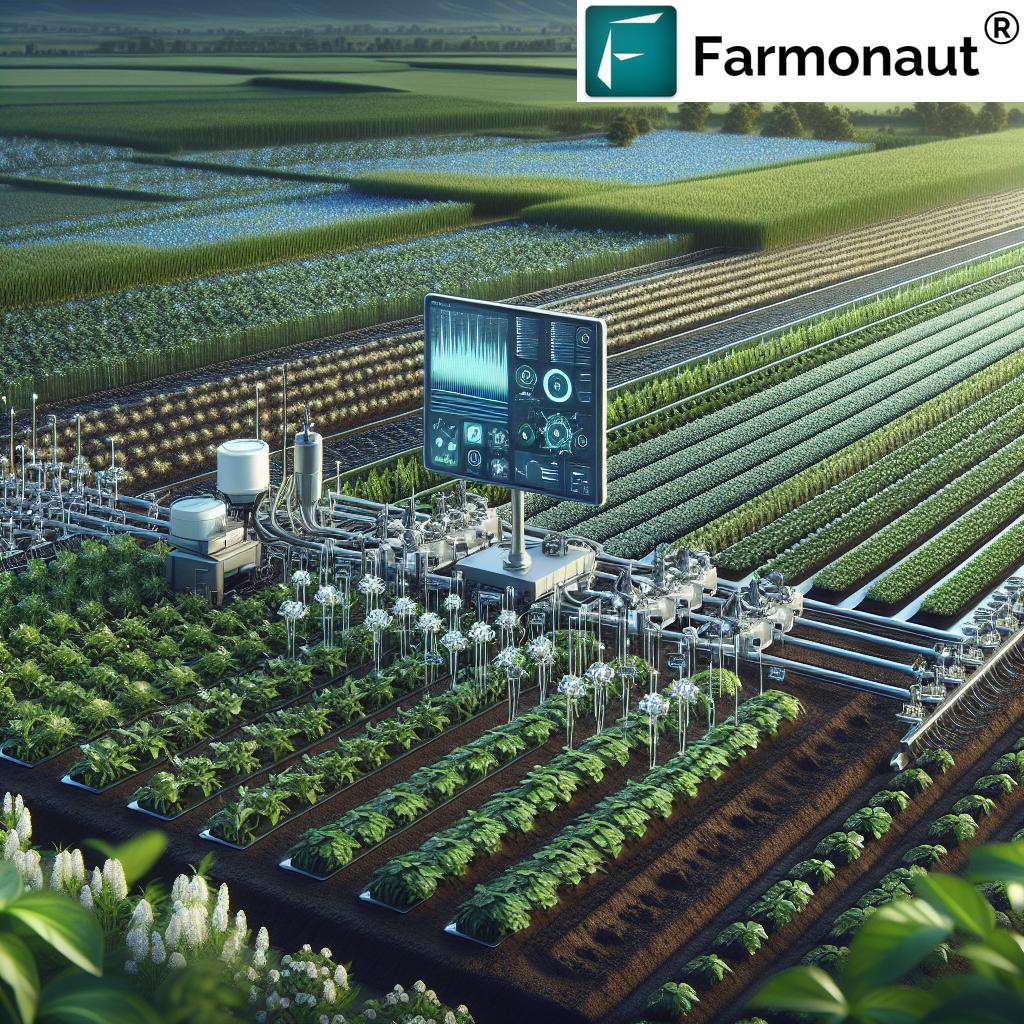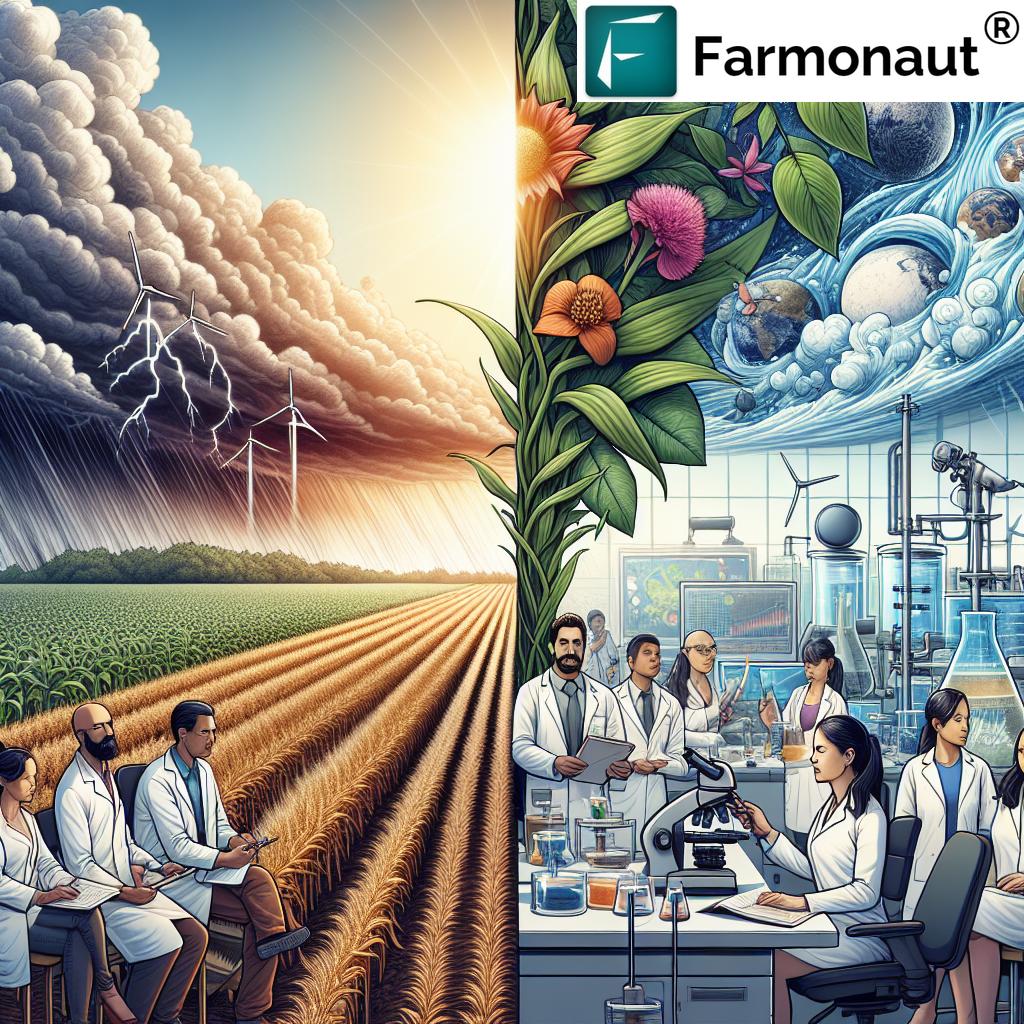Agricultural Products Most Affected by Tariffs 2025: Market Dynamics, Key Trends & Future Implications
Introduction: Tariffs and the Shifting Landscape of Agricultural Trade in 2025
Agricultural tariffs have long shaped the structure and competitiveness of global trade. In 2025, such tariff impositions continue to exert significant influence, creating winners and losers across commodities, countries, and supply chains. As countries pursue economic, political, and environmental goals, the products most affected by tariffs often include those with substantial trade volumes and elevated importance in domestic and global markets.
For farmers, exporters, and consumers alike, understanding what are the main agricultural products affected by the tariffs in 2025 is crucial. This knowledge empowers stakeholders to navigate an increasingly complex economic landscape, develop effective strategies, and make informed decisions.
“In 2025, U.S. soybean exports could face tariffs up to 35%, significantly impacting global market share.”
Understanding Tariffs and Agricultural Trade in 2025
Tariff policies are government-imposed duties or taxes on imports (and sometimes exports). They aim to shield domestic producers from foreign competition, generate revenue, and, increasingly, address environmental or geopolitical concerns. In agriculture, tariffs can reshape trade flows, affect production decisions, and even influence global food security.
How Do Agricultural Tariffs Work?
- Tariff Barriers: Direct financial charges on imported products, such as ad valorem, specific, or mixed tariffs.
- Non-Tariff Barriers: Labeling rules, phytosanitary restrictions, and quotas, often intertwined with tariff policies to protect domestic interests.
- Retaliatory Measures: Imposed tariffs in response to others’ trade restrictions or disputes, amplifying uncertainty for exporters and producers.
- Environmental Tariffs: New for 2025 and beyond—carbon border adjustments target commodities linked to high greenhouse gas emissions.
These tariff measures can cause significant disruptions, shifting production patterns and market share, and are often linked to broader geopolitical tensions—as witnessed in recent trade disputes between the United States and China.
Historical Context: What Were the Main Agricultural Products Affected by Tariffs?
To understand what specific agricultural products are most affected by the tariffs in 2025, it helps to review past trends. Historically, staple crops and high-value commodities like soybeans, corn, wheat, dairy, pork, beef, fruits (especially apples and citrus), and nuts (notably almonds and walnuts) have been the main targets in global trade disputes.
- Soybeans: In the 2018–2020 U.S.-China dispute, soybeans faced up to 30% additional tariffs, forcing American exporters to find alternative markets and altering global trade patterns.
- Dairy & Pork: Retaliatory tariffs on dairy and pork led to financial losses and shifts in production and export flows.
- Fruits & Nuts: High-value exports like apples, citrus fruits, almonds, and walnuts were targeted by tariff measures, disrupting access to key importing markets.
- Wheat & Corn: While impacts varied by region and supply-demand dynamics, wheat and corn also saw tariffs or trade restrictions.
Recent patterns show that tariffs are often imposed on products forming the backbone of agricultural exports—a trend that continues into 2025.
What Specific Agricultural Products Are Most Affected by the Tariffs in 2025?
In 2025, the agricultural products most affected by tariffs are those with large-scale exports, substantial economic significance, and high vulnerability to trade barriers. Let’s examine the main commodities at the center of tariff policies and market dynamics:
- Soybeans: Still at the heart of global trade tensions, with China imposing substantial tariffs on American soybeans, impacting global supply chains, livestock feed costs, and biofuel sectors.
- Corn & Wheat: Both crops face new or extended tariffs in various regions, with corn affected by phytosanitary (pest/disease) restrictions linked to trade policies.
- Dairy: Cheese, skim milk powder, and other dairy exports remain subject to protectionist tariffs in key regions.
- Meat (Beef & Pork): Pork and beef exports are highly sensitive to tariff changes, especially as China and other Asian markets pursue policies to protect domestic producers.
- Fruits (Apples, Citrus): Tariffs on apples and citrus have disrupted traditional export flows, with ongoing challenges due to phytosanitary barriers.
- Nuts (Almonds & Walnuts): Almonds, walnuts, and other nuts—particularly from California—are subject to rising tariffs in key importing markets.
These agricultural products continue to be targeted due to their role in domestic economies, high export volumes, and strategic significance amidst geopolitical tensions.
Comparative Impact Table: Agricultural Products Most Affected by Tariffs (2025)
| Agricultural Product | Major Exporting Country | Estimated 2025 Tariff Increase (%) | Estimated 2025 Export Volume Change (%) | Key Importing Markets Affected |
|---|---|---|---|---|
| Soybeans | United States, Brazil | U.S.: 35% Brazil: 12% |
U.S.: -28% Brazil: +10% |
China, EU, Mexico |
| Corn | United States, Brazil, Argentina | U.S.: 15% Brazil: 7% |
U.S.: -15% Brazil: +6% |
China, Japan, S. Korea |
| Wheat | United States, Canada, Russia | U.S.: 10% Russia: 8% |
U.S.: -8% Russia: +4% |
Africa, Asia, EU |
| Pork | United States, EU, Canada | U.S.: 22% EU: 10% |
U.S.: -18% EU: -5% |
China, Mexico, Japan |
| Beef | United States, Australia, Brazil | U.S.: 18% Australia: 7% |
U.S.: -13% Australia: -2% |
China, EU, Middle East |
| Dairy (Milk, Cheese, Powder) | United States, EU, New Zealand | U.S.: 15% EU: 9% |
U.S.: -9% EU: -3% |
China, S.E. Asia, Middle East |
| Fruits (Apples, Citrus) | United States, China, EU | U.S.: 20% China: 12% |
U.S.: -15% China: -2% |
China, India, Middle East |
| Nuts (Almonds, Walnuts) | United States (California), Australia, Turkey | U.S.: 20% Australia: 8% |
U.S.: -17% Australia: +3% |
China, EU, Middle East |
Table Legend:
Estimated values based on current 2025 trade policies and public projections. Actual impacts may differ by in-year negotiations and market conditions.
Tariffs and Shifting Trade Flows: Market Dynamics Explained
Tariff increases in 2025 are not being implemented in a vacuum—they result from global economic, environmental, and political pressures. The affected commodities are those holding substantial volumes in global trade, making their markets highly sensitive to policy shifts.
- Market Share Realignments: As China and the EU ramp up tariffs on soybeans, corn, pork, and nuts, export flows shift—for example, Brazil and Argentina gain market share at the expense of U.S. farmers.
- Price Volatility: Disrupted supply chains and uncertainty over tariff longevity cause food price fluctuations for consumers worldwide.
- Alternative Sourcing: Importing countries diversify suppliers, boosting regions less affected by the tariff measures.
- Production Adjustments: Farmers may adjust crop mixes or move to value-added and specialty products to minimize tariff risk.
Recent Examples in 2025
– Pork tariffs in China have encouraged suppliers from Europe and Brazil to fill the gap, even as U.S. producers face sharp export losses.
– Nut tariffs have pushed California growers to pivot supply towards India, the Middle East, and local U.S. markets.
– Processed foods and specialty agricultural products encounter increasing barriers as importing countries seek to protect domestic industries.
Canola Crisis 2025 | China 100 % Tariffs, Price Volatility & AI Precision Ag Saving SK Farms
Which Specific Agricultural Products Will Be Affected by the Tariffs: Emerging Trends for 2025 and Beyond
The future of agricultural tariffs goes well beyond recent trade tensions. 2025 brings an expanded focus on environmental sustainability, carbon emissions, and supply chain resilience, all influencing which specific agricultural products will be affected by the tariffs.
1. Environmental Tariffs & Carbon Border Adjustments
- Beef: Cattle production is a major greenhouse gas emitter. Carbon border tariffs are being discussed in the EU and some Asian markets, targeting beef exports from countries with lax environmental policies.
- Dairy: Dairy exports, especially milk powder and cheese, could face environmental tariffs, further complicating market access and raising compliance costs.
China Tariffs 2025: 7 Shocking Impacts on Oakland Chinatown Markets & Restaurants
2. Food Processing and Value-Added Products
- Nut Butters, Dried Fruits: As countries look to support local value chains, more processed food exports like nut butters, convenience snacks, and dried fruits are expected to face new tariffs or non-tariff restrictions.
- Specialty Grains: Products like quinoa, chia, or ancient grains gaining popularity may face targeted tariff measures as importing countries adjust trade policy post-pandemic.
3. Ongoing Commodity Targets
- Corn, Wheat, Soybeans and meat remain focal points, as they are the cornerstones of food security, animal feed, and industrial production.
Kentucky Corn & Soy 2025 ?️ 7 Ways Floods + China Trade Hit Yields—Farmonaut Solutions Inside
In summary, stakeholders must monitor not only traditional tariffs but new trade barriers emerging due to sustainability, food safety, and supply chain resilience.
Implications for Farming, Producers, and Global Markets
- Production Diversification: Farmers increasingly shift crop rotations or develop new value-added food products to navigate tariff risks.
- Investment in Sustainability: With environmental tariffs on the rise, producers are under pressure to adopt sustainable practices, such as regenerative agriculture, carbon farming, and resource management.
- Supply Chain Innovation: Technologies like satellite monitoring, AI-driven advisory, and blockchain-based traceability are increasingly used to track, validate, and optimize food supply chains.
- Intensified Trade Negotiations: Governments and trade organizations work to reduce tariff barriers and foster agreements while aligning with sustainability and food safety goals.
- Consumer Impact: Tariffs often increase food costs for consumers due to reduced supply and higher production costs, especially for imported goods.
Tariffs Rock Thief River Falls 2025 ⚙️ 7 Supply-Chain Shifts for Rural Tech Warehouses
“Tariffs on nuts may rise by 20% in 2025, altering top export destinations for California growers.”
Brazil April Rains 2025 | Corn & Soy Bounce-Back + AI Satellite Crop Monitoring for Big Yields
Market Trends Beyond 2025: The Role of Sustainability, Carbon Border Adjustments & Traceability
The agricultural industry is on the brink of major structural change as environmental policies and technology reshape the tariff discourse. Beyond traditional barriers, producers are now being judged on their ability to prove sustainability and transparency.
- Carbon Footprinting: Farmonaut’s carbon footprinting solutions empower agribusinesses to monitor emissions at every stage of crop or food production.
- Traceability: Blockchain technologies like those provided by Farmonaut ensure end-to-end traceability, supporting exporters in meeting importing countries’ food safety and transparency standards.
- Resource Management: Adopting advanced fleet and resource management tools can help optimize logistics and respond rapidly to market shifts due to tariff impositions.
Regenerative Agriculture 2025 ? Carbon Farming, Soil Health & Climate-Smart Solutions | Farmonaut
Farmonaut’s Technology: Reducing Risk and Enhancing Resilience for Agricultural Stakeholders
To help stakeholders navigate an evolving tariff landscape, we at Farmonaut provide a comprehensive suite of satellite-driven solutions tailored for the modern agriculture industry.
- Satellite-Based Crop Monitoring: With multispectral satellite imagery and NDVI analysis, users can track crop health, anticipate supply chain disruptions, and optimize yields quickly in response to market changes. Explore our large scale farm management tools here.
- AI Advisory & Jeevn System: Our AI-powered platform delivers custom forecasts, real-time interventions, and actionable strategies for producers impacted by tariffs, climate shocks, or shifting trade patterns.
- Blockchain Traceability: We offer blockchain-enabled product traceability, giving exporters and organizations a critical edge in meeting new import requirements and building market trust. Read more about blockchain traceability here.
- Carbon Emission Reporting: Our carbon footprinting service lets you demonstrate compliance with environmental standards, mitigating the impact of new carbon tariffs.
- API Integration: Developers and businesses can integrate our satellite-driven data into custom apps or platforms for seamless monitoring, analytics, and planning.
Check out the Farmonaut API and Developer Docs.
We are committed to delivering accessible, cost-effective, and scalable solutions that enable businesses and governments to thrive even as tariff measures and global trends continue to reshape the agriculture sector.
10 Low-Investment, High-Profit Agri Business Ideas in 2025
Useful Links: Farmonaut Tools for Agricultural Producers
Farmonaut’s tools are designed for farmers, exporters, organizations, and authorities—helping you anticipate, monitor, and adapt to the challenges posed by tariffs and trade policy shifts.
- Large Scale Farm Management: Monitor and manage fields at scale, receive AI-based advisories, and track supply chain disruptions from tariffs.
- Carbon Footprinting for Agriculture: Track and reduce emissions to comply with emerging carbon tariffs and environmental measures.
- Blockchain Product Traceability: Build trust and fulfil new transparency requirements in export markets.
- Fleet & Resource Management: Maximize logistics efficiency when navigating disrupted supply chains due to tariffs.
- Crop Loan & Insurance Verification: Leverage satellite verification to strengthen financial access and reduce risks even amidst volatile trade.
Brazil Rainfall Boom 2025 ?️ ENSO-Neutral, Soil-Moisture Maps & AI Precision Ag Rescue Corn & Soy
Farmonaut Subscription Plans
Explore flexible and affordable subscription plans for agricultural monitoring, traceability, and more:
Frequently Asked Questions (FAQs): Agricultural Products & Tariffs 2025
1. What are the main agricultural products affected by the tariffs in 2025?
Soybeans, corn, wheat, dairy (milk, cheese), pork, beef, fruits (apples, citrus), and nuts (especially almonds and walnuts) continue to be the main agricultural products most affected by tariffs worldwide due to their economic significance and high volume in international trade.
2. Why is understanding tariff impacts on agricultural products crucial for stakeholders?
Knowledge of what specific agricultural products are most affected by the tariffs helps farmers, exporters, and policymakers make informed decisions for planting, marketing, and negotiating trade agreements, reducing risk and maximizing opportunities.
3. How do environmental policies influence tariffs in 2025?
Environmental tariffs such as carbon border adjustments are increasingly used to target high-emissions commodities (beef, dairy). Compliance with sustainability standards is becoming essential for continued export access.
4. Which specific agricultural products will be affected by the tariffs in the near future?
Aside from traditional crops and meats, processed products (e.g., nut butters, dried fruits) and specialty grains are facing new tariff scrutiny as countries aim to bolster local industries and supply chain resilience.
5. How can satellite technology and data help agricultural stakeholders manage tariff disruptions?
Tools like Farmonaut’s satellite monitoring, carbon footprint reporting, and blockchain traceability empower producers and exporters to adapt quickly, validate compliance, and access new markets despite evolving trade barriers.
Conclusion: Navigating Agricultural Tariffs and Trade in 2025
In 2025 and beyond, tariffs continue to exert significant influence on the market dynamics of global agricultural trade. Soybeans, corn, wheat, dairy, pork, beef, fruits, and nuts remain at the forefront of trade disputes and tariff measures. Shifting policies—driven by geopolitical tensions and emerging environmental regulations—require stakeholders in the agriculture sector to be agile, responsive, and continually informed.
By understanding which specific agricultural products will be affected by the tariffs, leveraging advanced satellite technologies, and embracing sustainable, traceable, and transparent practices, producers, exporters, and consumers alike can better navigate the evolving landscape of global agriculture. We at Farmonaut are committed to empowering you with actionable insights and cutting-edge tools that bridge data with decisions—enabling you to adapt, thrive, and lead in an unpredictable future.















